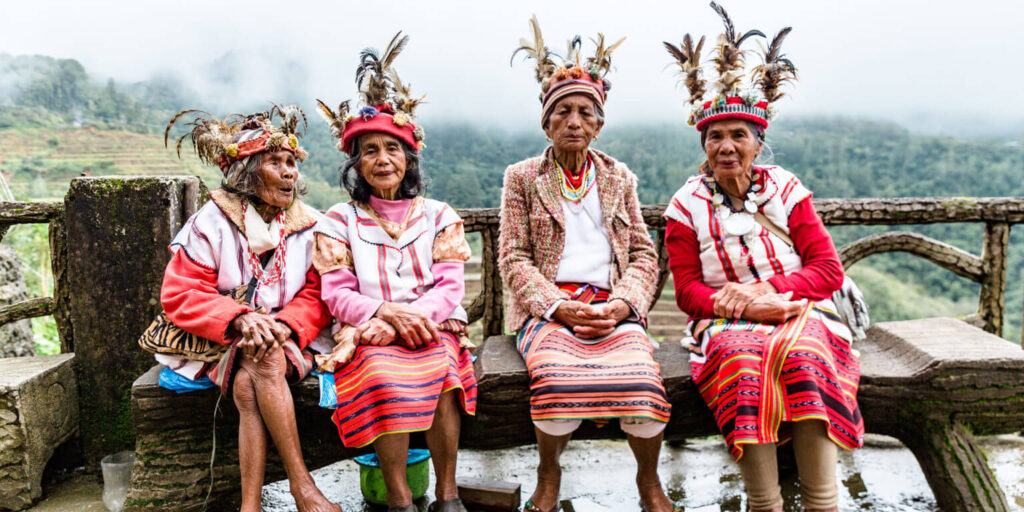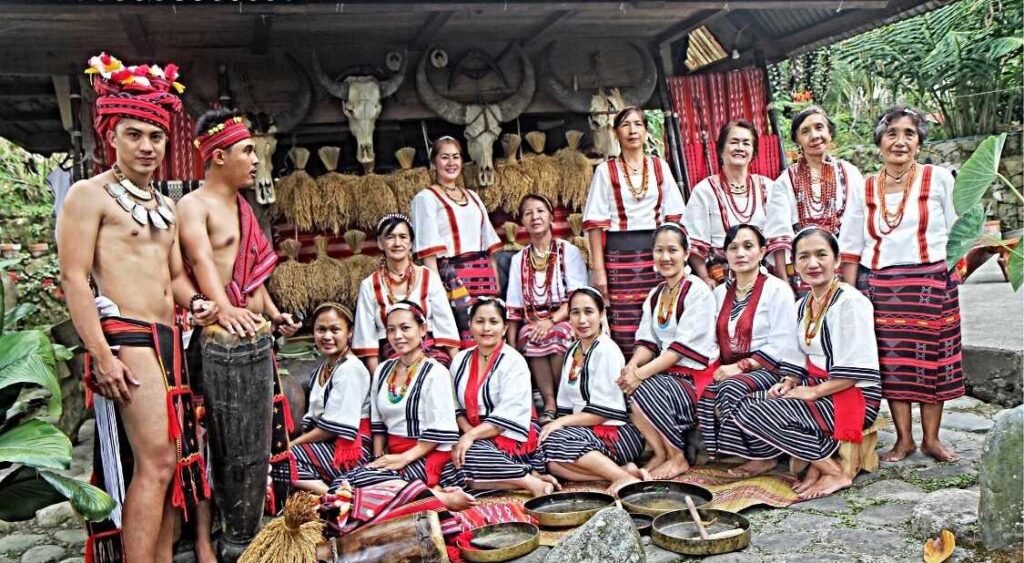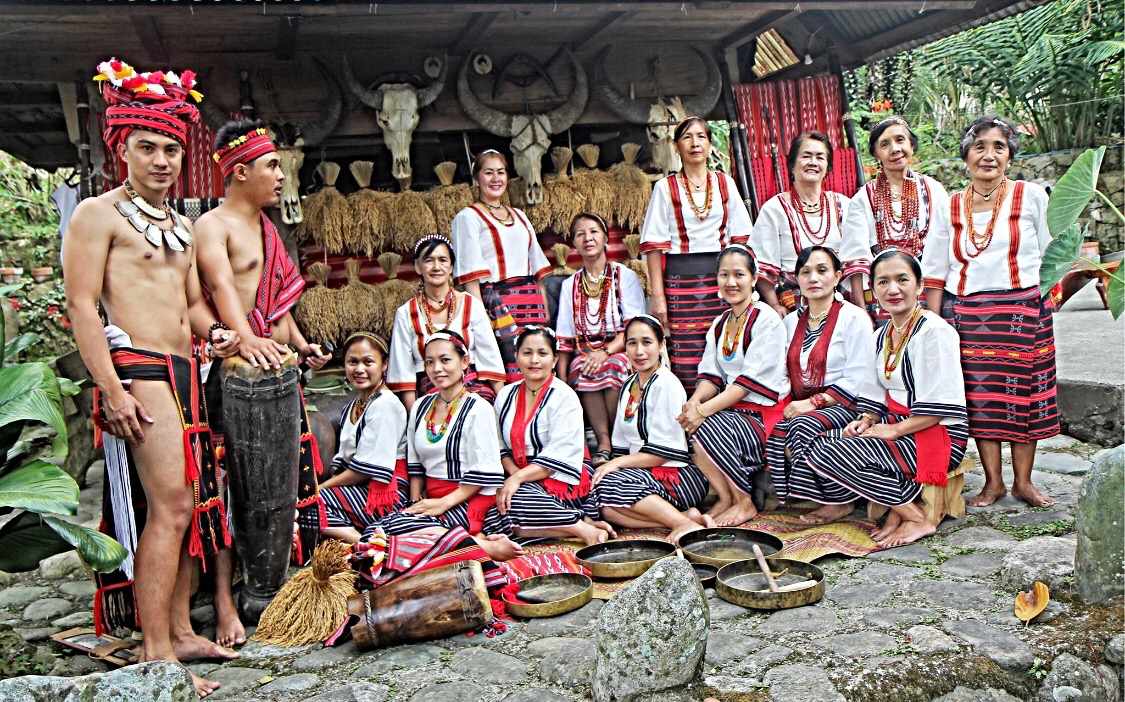Ifugao and Ilocano women have traditionally worn short, tight-fitting, hand-woven skirts with colorful horizontal stripes, with a white short-sleeve blouse and a loose striped jackets. They have traditionally gone barefoot and sometimes tied a colored band around their head. Some men still wear loincloths and go everywhere barefoot. They are quite sure-footed on mountain trails. Their toes and feet grip on to rocks like the hand of a pitcher grasping a baseball.
In 1912, Cornélis De Witt Willcox wrote in “The Head Hunters of Northern Luzon”: “ As elsewhere, but few clothes are seen: the women wear a short striped skirt sarong-wise, but bare the bosom. However, they are beginning to cover it, just as a few of them had regular umbrellas. They leave the navel uncovered; to conceal it would be immodest. The men are naked save the gee-string, unless a leglet of brass wire under the knee be regarded as a garment; the bodies of many of them are tattooed in a leaf-like pattern. A few men had the native blanket hanging from their shoulders, but leaving the body bare in front. The prevailing color is blue; at Campote it is red. The hair looked as though a bowl had been clapped on the head at an angle of forty-five degrees, and all projecting locks cut off. If the hair is long, it means that the wearer has made a vow to let it grow until he has killed someone or burnt an enemy’s house. We saw such a long-haired man this day. Some of the men wore over their gee-strings belts made of shell (mother-of-pearl), with a long free end hanging down in front. These belts are very costly and highly thought of. Earrings are common, but apparently the lobe of the ear is not unduly distended. Here at Kiangan, the earring consists of a spiral of very fine brass wire. [Source:“The Head Hunters of Northern Luzon” by Cornélis De Witt Willcox, Lieutenant-Colonel U.S. Army, Professor United States Military Academy, 1912 ]

“At Banawe we saw more examples of native arts and crafts than we had heretofore. For example, the pipe is smoked, and we saw some curious specimens in brass, much decorated with pendent chains; others were of wood, some double-bowled on the same stem. Some of the men wore helmets, or skull-caps, cut out of a single piece of wood. Other carved objects were statuettes, sitting and standing; these are anitos, frequently buried in the [122] rice-paddies to make the crop good; besides, there were wooden spoons with human figures for handles, the bowls being symmetrical and well finished. Then there were rice-bowls, double and single, some of them stained black and varnished. Excellent baskets were seen, so solidly and strongly made of bejuco as to be well-nigh indestructible under ordinary conditions. Mr. Maimban got me a pair of defensive spears (so-called because never thrown, but used at close quarters) with hollow-ground blades of tempered steel, the head of the shaft being wrapped with bejuco, ornamentally stained and put on in geometrical patterns.



